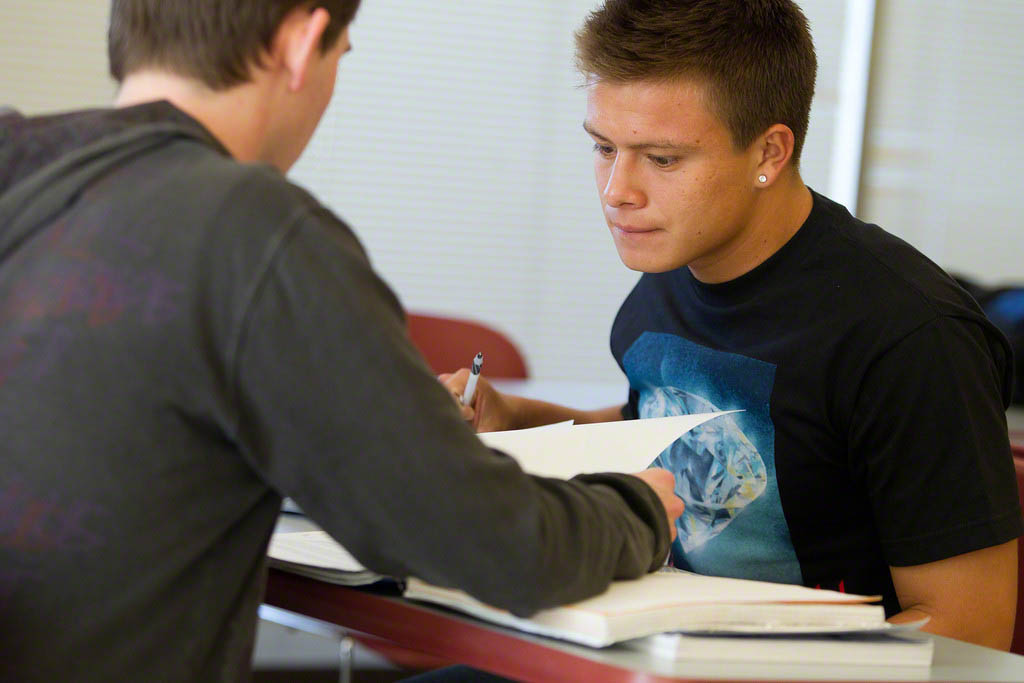
Although many instructors find it challenging just to
get students to do the reading
, it can be equally difficult (and equally important) to make good use of the readings in class afterwards. The following ideas and resources are intended to help faculty members build on course readings effectively and thoughtfully.
Holding Students Accountable
If we want our students to be accountable for their reading, it's important to think about what role reading play in our course. This often means that the readings should add to our classroom experience, not merely duplicate it. In Teaching at Its Best: A Research-Based Resource for College Instructors, Linda Nilson (2003) explained that, “It is important that your students can’t expect to pick up the knowledge in your lecture. This means that you cannot rehash the readings in class ... You can spend class time answering questions on the readings, elaborating and extending them, and leading activities that make students think about and use the knowledge” (p. 138).
Nilson (2003) then recommends many strategies that hold students accountable for reading well, including:
- assigning homework (e.g.,
low-stakes responses to the readings turned in on notecards or electronically);
- giving
quizzes covering major points in the reading that could be turned in before class, the results then used as feedback for how to structure the class session;
- asking for
in-class written exercises or problem solving questions, often gathered by tools such as classroom assessment techniques (e.g., mini essay or summary);
- and having students give oral presentations (e.g., debates, panels, or role plays).
Technology tools and strategies are available to help us design and assign reading responses, reflections, journals, or quizzes:
- Social annotation tools allows your students to markup and discuss a text with one another.
- Polling software like PollEverywhere allows you to prompt students to respond to your questions across a variety of formats, including multiple-choice, open-ended responses, and ranked voting.
-
Collaborative documents like Google Docs allow you to collect short written responses from students, or assign small group work culminating in a "deliverable."
-
Blogs or
ePortfolios can be sites where students demonstrate their learning from readings and extend their think to real-world audiences.
Helping Students Understand a Reading
In
IDEA Paper #40, Eric Hobson (2004) suggests a ideas for helping students prepare to read and give meaning to a text:
- Explain the reading’s relevance either by previewing the material in class or explaining it in the syllabus. Consider letting students know the context in which the text was written, who wrote it, why it is considered important, and what impact it has.
- Include time to teach students how to read at the collegiate level. Do not expect new students or even returning students to be able to effectively read, annotate, or mark their texts. For many students, college material presents structure, terminology, prose, concepts, etc. that they have little exposure to.
- Allow class time to read or review the core or required reading. By doing this students are likely to have a deeper understanding of a portion of the text, helping them frame the rest of the reading.
In some classes, it might make sense to organize our readings by source or importance. Students tend to prioritize the amount of work required to succeed in a course, and this often means a large group of texts lumped together as “required reading” will appear to have equivalent weight and/or importance. Organizing readings into groups will differentiate the texts from one another, making sure that students not only read what is absolutely essential, but also give meaning to how texts relate to one another.
Example Prioritized Reading List
European History: Middle Ages through the Renaissance
|
Week |
Required Reading |
Supporting Material |
First hand accounts |
| 1 |
Danielson, Ch.13 (p. 389-414) & 14 |
Nauert, p. 202-228 |
Arrizabalaga,
Disease in medieval France |
| 2 |
“Christine de Pisan, The City of Ladies”—Perry “A Merchant of Paris, On Love and Marriage”—Perry |
None |
C. Mews, The Lost Love Letters of Abelard and Heloise |
Further Resources
Hobson, E. H. (2004).
Getting Students to Read: Fourteen Tips. IDEA Paper, 40.
Jabr, Ferris. (2013). "The Reading Brain in the Digital Age: Why Paper Still Beats Screen."
Scientific American.
Nilson, L.B. (2003). Teaching at Its Best: A Research-Based Resource for College Instructors. San Francisco: Jossey-Bass.
Piper, Andrew. (2012).
Book Was There: Reading in Electronic Times. Chicago: University of Chicago Press.
"What is a Reader?" (2010). Mills College, Stanford University, U.C. Berkeley, and U.C. Santa Cruz.
Wolf, MaryAnne. (2008). Proust and the Squid: The Story and Science of the Reading Brain. New York: Harper.